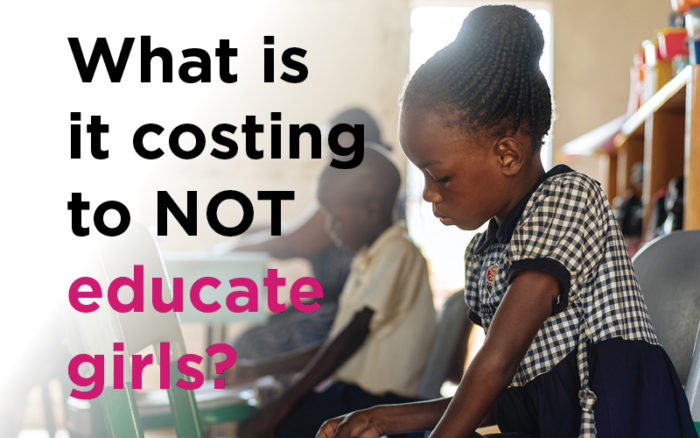$30 Trillion: The Cost of Uneducated Girls
Girls across the world are 50% more likely to be out of school than boys—but why?
Miriam Sawadogo Abibatou is from Burkina Faso. In recent years, less than half of all school-aged girls attended primary school and only a quarter of them completed. For most girls in her country, they’ve dropped out before they’ve turned 10. Young girls are seen as old enough to raise their siblings, run the household, and find odd job work. They’re desperately needed to help their families survive.
But it comes at a cost.
In many developing nations, girls are married soon after they reach puberty. They become young mothers in charge of running their own household and raising their own kids. The luxury and opportunity to dream of a future full of their own hopes are quickly left behind along with the ability to continue to go to school or learn how to read.
Miriam is 18 but she’s only in the 6th grade. Statistically the chances of her continuing on into secondary school is low…
So, what is the cost of uneducated girls?
Let’s talk numbers
- In low-income countries, less than 2/3 of girls complete primary school.
- India loses almost $33 billion in economic growth each year from failing to educate girls. Sub-Saharan Africa loses $5.2 billion. Together, that’s enough to pull the entire world out of extreme poverty for 3 months.
- Globally, if girls received a quality education for 12 years human capital wealth across the world would increase by $15-30 trillion.
- If a girl completes, or even partially completes, her primary schooling she can earn 14-19% more than her fellow girls with no education. She can also expect to make 10-20% more for each additional year of schooling past the 5th grade.
- In Sierra Leone, Burkina Faso, or Ethiopia, where the average annual income is less than the average American’s monthly car payment, the opportunity of extra income can make a difference.
In the developing world, girls without an education cost their country millions of dollars and it costs many their lives. The likelihood of early childbearing, risk of HIV/AIDS, and malnutrition are all directly linked to girls’ education.
Over the past several decades the world has made amazing strides to make sure girls are being educated. In 2000, 205 million girls were out of school. As of 2016, that number fell by 73.3 million. Educating girls continues to be an internationally targeted goal and is of great value at Edify in our partner schools.
But there’s more to be done!
Celebrating Her Learning
Miriam went to live with her older brother knowing his family could help provide a better life for her. An Edify partner school happened to be just down the road. When she asked, her brother agreed to let her attend even though they are Muslim and she would be much older than all the students.
“Miriam does not mind the age gap. She is thrilled to be attending school and soaking up all the knowledge she can. Everyday Miriam feels privileged to go to school and to the Discipleship Club –where she made the decision to give her life to Christ. She is excelling in her studies and is planning to continue her education in secondary school,” Edify’s Burkina Faso Country Director proudly shares.
Miriam is just one of many girls around the world who have now been given a chance to receive a quality education. She’s just one of many whose life has been touched by Edify’s partnerships, transforming her life and giving her hope for a future.
This year, on International Day of the Girl, we celebrate the strength of all girls across the world. We are hopeful for the dreams they will dream with an education in hand.


This s awesome. In many countries never mind what eats up their economies. Those that have the spirit interpret dreams.
Thanx to Edify.